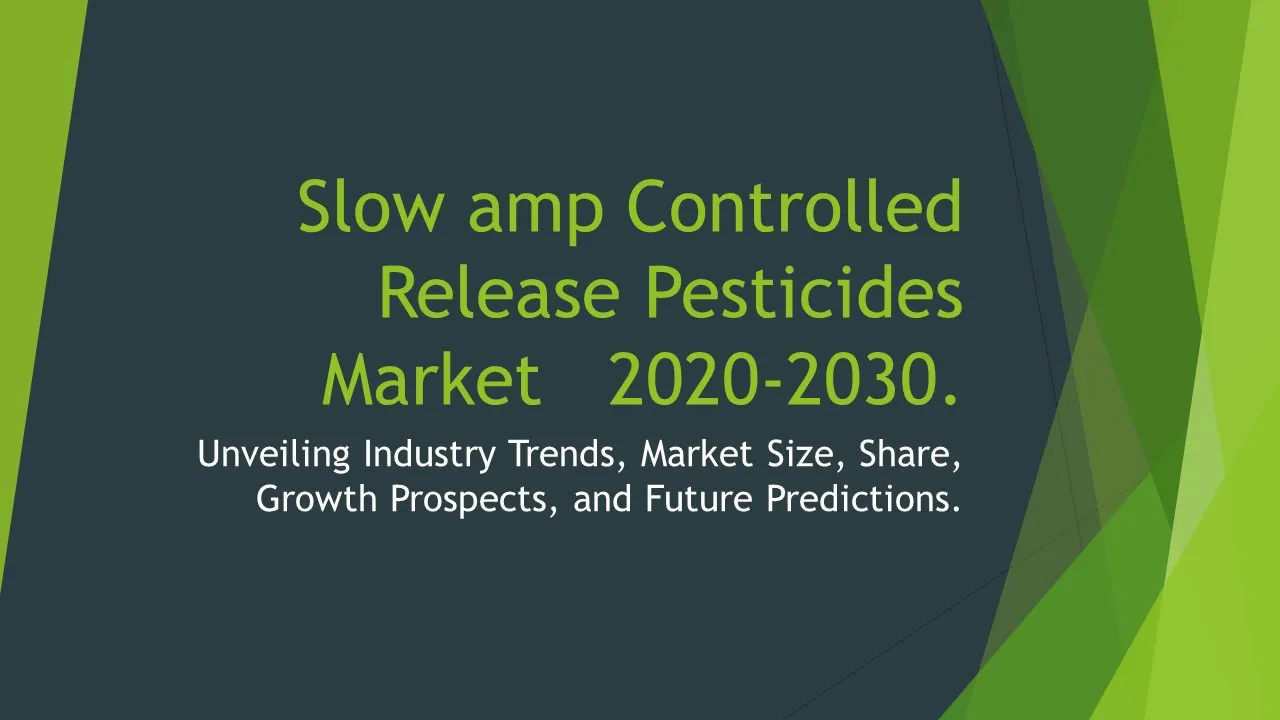Agrochemical Sales
Agrochemical Sales Market Segments - by Product Type (Fertilizers, Pesticides, Herbicides, Insecticides, Fungicides), Application (Cereals & Grains, Fruits & Vegetables, Oilseeds & Pulses, Others), Distribution Channel (Direct Sales, Distributors/Wholesalers, Online Retail), Ingredient Type (Nitrogen, Phosphorus, Potassium, Others), and Region (Asia Pacific, North America, Latin America, Europe, Middle East & Africa) - Global Industry Analysis, Growth, Share, Size, Trends, and Forecast
- Report Preview
- Table Of Content
- Segments
- Methodology
Agrochemical Sales Market Outlook
The global agrochemical sales market was valued at approximately USD 250 billion in 2022 and is projected to reach USD 350 billion by 2030, growing at a CAGR of around 5% from 2023 to 2030. This growth is driven by an increasing demand for food production due to the rising global population, coupled with the need to enhance agricultural productivity through advanced agrochemical solutions. Factors such as the adoption of sustainable farming practices and innovations in agrochemical technologies are further propelling the market forward. Additionally, government initiatives and subsidies aimed at promoting agricultural sustainability are expected to foster market growth significantly in the coming years.
Growth Factor of the Market
One of the primary growth factors for the agrochemical sales market is the escalating global demand for food, which is driven by rising populations and changing consumption patterns. As urbanization continues to rise, so does the necessity for more efficient agricultural practices that can yield higher crop outputs on limited arable land. This has led to an increased reliance on agrochemicals, particularly fertilizers and pesticides, to maximize yields and ensure food security. Furthermore, advancements in agrochemical formulations and the introduction of precision agriculture techniques are facilitating more effective and targeted application methods, thus enhancing the overall effectiveness and efficiency of these products. Additionally, a growing awareness about the importance of sustainable farming practices has led to increased investments in environmentally-friendly agrochemicals, thus broadening market opportunities. Moreover, international trade dynamics and favorable pricing trends have further encouraged the adoption of agrochemicals globally.
Key Highlights of the Market
- The agrochemical sales market is projected to reach USD 350 billion by 2030 with a CAGR of 5%.
- Fertilizers constitute the largest segment in the agrochemical market, driven by increasing crop production needs.
- North America and Asia Pacific are leading regions, contributing significantly to global sales due to advanced agricultural practices.
- Online retail channels are emerging as a vital distribution method, providing easier access to agrochemicals for farmers.
- Investment in R&D for bio-based and organic agrochemicals is gaining momentum, aligning with sustainability trends.
By Product Type
Fertilizers:
Fertilizers are the largest segment driving the agrochemical sales market, accounting for a substantial share of overall sales. These products are essential for promoting plant growth and enhancing soil fertility, which are critical for achieving optimal crop yields. The increasing global population and the corresponding rise in food demand have resulted in heightened fertilizer usage in agriculture. Both nitrogen-based and phosphorus-based fertilizers are widely used, with farmers relying heavily on these chemical inputs to boost productivity. Moreover, the trend towards precision farming techniques is encouraging the development of specialized fertilizers that cater to specific crop needs, thereby increasing their efficiency and reducing environmental impact.
Pesticides:
Pesticides play a crucial role in protecting crops from pests and diseases, thus safeguarding agricultural productivity. This segment has witnessed significant growth due to the increasing prevalence of pests and pathogens that threaten crop yields. Farmers are increasingly adopting integrated pest management strategies that combine the use of chemical and biological control methods to ensure sustainable agriculture. The development of innovative pesticide formulations, including biopesticides and systemic pesticides, has further enhanced effectiveness while minimizing potential negative impacts on the environment. As awareness of food safety and quality rises, the demand for pesticides that meet regulatory standards and consumer preferences is also increasing.
Herbicides:
Herbicides represent another vital segment within the agrochemical sales market, offering solutions for weed control, which is critical for maintaining crop health and maximizing agricultural output. The rise in herbicide use can be attributed to the growing adoption of monoculture practices and the increasing prevalence of resistant weed species. Advanced formulations, such as selective herbicides, are being developed to target specific weed types while minimizing harm to desired crops. Moreover, the integration of herbicides within precision agriculture frameworks allows for targeted applications, reducing the overall quantity used and mitigating environmental concerns. The trend toward sustainable agriculture practices is expected to further support the growth of the herbicide market.
Insecticides:
Insecticides are fundamental to protecting crops from harmful insect infestations that can significantly compromise agricultural yields. This segment has seen robust growth due to the rising awareness of pest management solutions among farmers. The development and introduction of novel insecticides, including those derived from natural sources, are enhancing effectiveness while addressing environmental concerns. Integrated pest management (IPM) strategies have also led to the increased usage of insecticides as part of an overall pest control approach. Furthermore, the growing demand for organic farming methods has spurred the development of organic insecticides, appealing to a specific segment of consumers preferring chemical-free produce.
Fungicides:
Fungicides are essential for preventing and managing fungal diseases in crops, which can lead to significant losses if left unchecked. The increasing occurrence of crop diseases due to changing climatic conditions is driving the demand for effective fungicidal solutions. Innovations in fungicide formulations, including systemic fungicides that provide longer-lasting protection, are enhancing their market appeal. Additionally, the trend towards sustainable farming practices is encouraging the development of eco-friendly fungicides that are less harmful to beneficial organisms. With an increasing focus on crop health and yield quality, the fungicides segment is poised for continued growth in the agrochemical market.
By Application
Cereals & Grains:
The cereals and grains application segment is one of the largest consumers of agrochemicals, reflecting the global demand for staple foods such as rice, wheat, and corn. The reliance on fertilizers and pesticides to enhance the productivity and quality of these crops is pivotal in meeting food security needs. With the growing population and urbanization trends, the pressure to increase yields from limited arable land is compelling farmers to adopt more intensive farming practices, which include the extensive use of agrochemicals. Innovations in crop management technologies and precision agriculture are facilitating better applications of these chemicals, ensuring higher efficiency and effectiveness in cereal and grain production.
Fruits & Vegetables:
The fruits and vegetables segment has shown significant growth in agrochemical usage, driven by increasing consumer demand for fresh produce. This sector requires careful management of pests and diseases to maintain both yield and quality. Advanced agrochemicals such as organic fertilizers and targeted pesticides are crucial for improving the growing conditions and protection of fruits and vegetables. As consumer preferences shift towards organic and sustainably grown produce, there is a notable increase in the use of organic agrochemicals, creating new opportunities within this segment. Farmers are adopting integrated pest management practices to maintain high-quality standards while meeting regulatory requirements for food safety.
Oilseeds & Pulses:
Oilseeds and pulses are gaining traction in the agrochemical sales market as the demand for plant-based oils and protein sources continues to rise. Agrochemicals play a vital role in ensuring optimal growth and yield of these crops, which are essential for both food and industrial applications. The adoption of modern farming techniques, including the utilization of genetically modified organisms (GMOs), has increased the use of agrochemicals in this segment. Farmers are focusing on sustainable practices by incorporating precision application methods that align with environmental conservation efforts while maximizing production efficiency.
Others:
This category encompasses various other applications of agrochemicals, including specialty crops and ornamental plants. The diverse needs of these markets often require tailored agrochemical solutions that can address specific pest and disease challenges. The increasing interest in landscaping, gardening, and plant cultivation for aesthetic purposes is contributing to the growth of this segment. Furthermore, as urban agriculture gains popularity, the demand for agrochemicals that cater to small-scale and home gardening practices is expected to rise, offering new growth opportunities for manufacturers.
By Distribution Channel
Direct Sales:
Direct sales remain a significant distribution channel in the agrochemical market, allowing manufacturers to engage directly with farmers and end-users. This approach facilitates better customer relationships and enables companies to provide tailored solutions based on specific agricultural needs. By offering direct access to products, manufacturers can ensure better pricing, product availability, and personalized support, thereby enhancing customer satisfaction. This channel is particularly advantageous for large-scale farms that require bulk purchases, as it helps in managing logistics and supply chain efficiencies.
Distributors/Wholesalers:
Distributors and wholesalers play a key role in the agrochemical distribution landscape, bridging the gap between manufacturers and end-users. These intermediaries have established networks that enable them to reach a wider customer base, particularly in rural areas where direct access to manufacturers may be limited. The reliance on distributors allows agrochemical companies to expand their market presence without incurring substantial logistical costs. Moreover, distributors often provide value-added services such as technical support and advice on product usage, thereby enhancing their importance in the supply chain.
Online Retail:
The online retail channel for agrochemicals is rapidly gaining traction, driven by technological advancements and the growing adoption of digital commerce among farmers. E-commerce platforms provide farmers with convenient access to a wide range of agrochemical products, often at competitive prices. The ability to compare products and read reviews has empowered growers to make informed purchasing decisions. Additionally, online retail facilitates timely procurement of essential inputs, reducing lead times and supporting effective crop management. As digital literacy among farmers improves, it is expected that the online retail channel will continue to grow and transform the agrochemical buying experience.
By Ingredient Type
Nitrogen:
Nitrogen-based fertilizers are among the most widely used agrochemical products, essential for promoting vegetative growth and enhancing crop yields. Nitrogen is a critical nutrient that supports photosynthesis and overall plant development. The increased global demand for high-yield crops has driven the consumption of nitrogen fertilizers, particularly in intensive farming systems. Various forms of nitrogen fertilizers, including urea and ammonium nitrate, are utilized depending on the crop requirements and soil conditions. Ongoing research and development efforts are focusing on improving nitrogen use efficiency to reduce environmental impacts associated with excess application.
Phosphorus:
Phosphorus is another fundamental ingredient in fertilizers, playing a vital role in energy transfer, photosynthesis, and the development of roots and flowers. The demand for phosphorus fertilizers is closely aligned with the need to enhance soil fertility and improve crop quality. The increasing adoption of soil health management practices has led to greater awareness of phosphorus application methods and their impact on agricultural sustainability. As the global agricultural landscape evolves, effective management of phosphorus inputs will be crucial for maintaining soil health and preventing nutrient runoff, highlighting the importance of this ingredient type within the agrochemical market.
Potassium:
Potassium is essential for plant health, influencing water regulation, enzyme activation, and overall growth processes. The increasing need for potassium fertilizers is driven by the growing awareness of their role in improving crop resilience against diseases and environmental stresses. This ingredient type is particularly important for crops susceptible to drought and adverse weather conditions. The market for potassium fertilizers is expanding as farmers recognize the importance of balanced nutrient management for achieving optimal productivity. Innovations in potassium fertilizer formulations and application techniques are also gaining traction, aligning with sustainable agricultural practices.
Others:
This category includes various other ingredient types used in agrochemical products, such as micronutrients and organic soil amendments. The demand for these alternatives is growing as farmers seek to enhance soil fertility and promote sustainable farming practices. The incorporation of organic inputs is becoming increasingly popular among environmentally-conscious farmers who aim to reduce reliance on synthetic chemicals. As research continues to unveil the benefits of diverse nutrient sources, the market for alternative ingredient types in agrochemicals is expected to expand, providing growers with more options for sustainable crop management.
By Region
The agrochemical sales market is divided into several key regions, each contributing uniquely to overall market dynamics. The Asia Pacific region stands out as a significant market, accounting for over 30% of global sales, driven by the increasing agricultural activity and the adoption of modern farming techniques. Countries such as India and China are experiencing rapid agricultural development, fostering demand for fertilizers and pesticides to support their growing food production needs. Furthermore, the region is expected to witness a CAGR of approximately 6% from 2023 to 2030, fueled by government initiatives aimed at enhancing agricultural productivity and sustainability.
In North America, the agrochemical market is characterized by advanced agricultural practices, high levels of technology adoption, and a strong emphasis on research and development. The United States, in particular, is one of the largest consumers of agrochemicals, with a considerable portion of sales attributed to the corn and soybean sectors. The North American market is expected to maintain steady growth, with a projected CAGR of around 4% over the forecast period. Europe also holds a significant share in the agrochemical market, where stringent regulations regarding chemical use are influencing product development and market dynamics. The focus on sustainable farming practices is driving the implementation of eco-friendly agrochemical solutions across the region.
Opportunities
The agrochemical sales market presents numerous opportunities, particularly through the increasing focus on sustainable agriculture and organic farming practices. As consumer awareness regarding environmental issues and food safety continues to rise, there is a growing demand for eco-friendly and organic agrochemicals. This shift provides manufacturers with the opportunity to innovate and develop new products that meet consumer preferences while adhering to regulatory requirements. Additionally, the integration of digital technologies in agriculture, such as precision farming and data analytics, offers significant potential to optimize agrochemical usage, reducing waste and increasing overall efficiency. By leveraging technology, companies can provide tailored solutions to farmers, enhancing their competitive advantage in the market.
Moreover, the expansion of agrochemical markets in emerging economies represents another lucrative opportunity. Countries in Asia, Latin America, and Africa are experiencing rapid agricultural development, driven by rising populations and changing dietary preferences. As these regions invest in modern agricultural practices and infrastructure, the demand for agrochemicals is expected to surge. Companies that can effectively navigate the regulatory landscape and adapt their offerings to meet the specific needs of these markets will benefit from significant growth prospects. Initiatives focused on research and development, particularly in the areas of biopesticides and biofertilizers, will further strengthen the market positioning of agrochemical manufacturers in a rapidly evolving agricultural landscape.
Threats
Despite the promising growth outlook for the agrochemical sales market, several threats could hinder its progress. One of the primary concerns is the increasing scrutiny and regulatory pressure surrounding the use of chemical inputs in agriculture. Governments and international organizations are imposing stricter regulations and guidelines to address environmental and health concerns associated with agrochemical use. This trend may result in the increased cost of compliance for manufacturers and farmers alike, potentially limiting the market's growth potential. Additionally, rising public awareness and advocacy against chemical farming practices could further drive demand for organic and sustainable alternatives, challenging traditional agrochemical companies to adapt quickly to changing consumer preferences.
Furthermore, climate change poses a significant threat to agricultural productivity, affecting the effectiveness of agrochemicals and altering pest and disease patterns. Unpredictable weather conditions and extreme climatic events may hinder crop yields, impacting the overall demand for agrochemical products. As agricultural practices evolve in response to these challenges, there is a pressing need for innovations in agrochemical formulations that can adapt to changing environmental conditions. The competition from biological and organic agricultural solutions is also intensifying, as consumers increasingly prefer products produced without synthetic chemicals. Companies that fail to innovate and diversify their product offerings may find it increasingly difficult to sustain their market positions.
Competitor Outlook
- BASF SE
- Syngenta AG
- Bayer CropScience AG
- Corteva Agriscience
- FMC Corporation
- Dow AgroSciences LLC
- Nufarm Limited
- ADAMA Agricultural Solutions Ltd.
- Sumitomo Chemical Co., Ltd.
- UPL Limited
- K+S AG
- Yara International ASA
- Nutrien Ltd.
- Arysta LifeScience Corporation
- Rallis India Ltd.
The competitive landscape of the agrochemical sales market is characterized by a mix of established multinational corporations and emerging regional players. Major companies like BASF, Syngenta, and Bayer CropScience dominate the market due to their extensive product portfolios, geographic reach, and significant investments in research and development. These industry leaders continually innovate to introduce new products and technologies that cater to evolving agricultural practices, particularly focusing on sustainability and biological solutions. Their strong brand recognition and distribution networks further solidify their positions in the competitive landscape, enabling them to respond swiftly to market demands and regulatory changes.
In addition to the major players, there is a growing number of smaller, specialized companies entering the market with a focus on organic and bio-based agrochemical solutions. These companies are gaining traction as farmers and consumers increasingly seek environmentally-friendly alternatives to traditional chemicals. Their agility and innovative approaches often allow them to cater to niche markets effectively. The competitive dynamics in the agrochemical market are shifting, with increasing emphasis on sustainability, digital solutions, and customer-centric approaches as key drivers of differentiation. This presents both opportunities and challenges for established players as they adapt to the changing market landscape.
Ultimately, leading agrochemical companies are actively pursuing strategic partnerships, collaborations, and acquisitions to enhance their market positions. Companies are striving to expand their product offerings, enter new markets, and leverage technological advancements to drive growth. For instance, Corteva Agriscience has been making significant investments in precision agriculture technologies, while FMC Corporation focuses on developing novel pest management solutions. Collaboration with agricultural research institutions and universities is also common, as these organizations work together to foster innovation and develop new solutions to meet the needs of modern agriculture. As the agrochemical landscape continues to evolve, companies that prioritize research, sustainability, and customer engagement will hold a competitive edge in the market.
1 Appendix
- 1.1 List of Tables
- 1.2 List of Figures
2 Introduction
- 2.1 Market Definition
- 2.2 Scope of the Report
- 2.3 Study Assumptions
- 2.4 Base Currency & Forecast Periods
3 Market Dynamics
- 3.1 Market Growth Factors
- 3.2 Economic & Global Events
- 3.3 Innovation Trends
- 3.4 Supply Chain Analysis
4 Consumer Behavior
- 4.1 Market Trends
- 4.2 Pricing Analysis
- 4.3 Buyer Insights
5 Key Player Profiles
- 5.1 K+S AG
- 5.1.1 Business Overview
- 5.1.2 Products & Services
- 5.1.3 Financials
- 5.1.4 Recent Developments
- 5.1.5 SWOT Analysis
- 5.2 BASF SE
- 5.2.1 Business Overview
- 5.2.2 Products & Services
- 5.2.3 Financials
- 5.2.4 Recent Developments
- 5.2.5 SWOT Analysis
- 5.3 Syngenta AG
- 5.3.1 Business Overview
- 5.3.2 Products & Services
- 5.3.3 Financials
- 5.3.4 Recent Developments
- 5.3.5 SWOT Analysis
- 5.4 UPL Limited
- 5.4.1 Business Overview
- 5.4.2 Products & Services
- 5.4.3 Financials
- 5.4.4 Recent Developments
- 5.4.5 SWOT Analysis
- 5.5 Nutrien Ltd.
- 5.5.1 Business Overview
- 5.5.2 Products & Services
- 5.5.3 Financials
- 5.5.4 Recent Developments
- 5.5.5 SWOT Analysis
- 5.6 Nufarm Limited
- 5.6.1 Business Overview
- 5.6.2 Products & Services
- 5.6.3 Financials
- 5.6.4 Recent Developments
- 5.6.5 SWOT Analysis
- 5.7 FMC Corporation
- 5.7.1 Business Overview
- 5.7.2 Products & Services
- 5.7.3 Financials
- 5.7.4 Recent Developments
- 5.7.5 SWOT Analysis
- 5.8 Rallis India Ltd.
- 5.8.1 Business Overview
- 5.8.2 Products & Services
- 5.8.3 Financials
- 5.8.4 Recent Developments
- 5.8.5 SWOT Analysis
- 5.9 Corteva Agriscience
- 5.9.1 Business Overview
- 5.9.2 Products & Services
- 5.9.3 Financials
- 5.9.4 Recent Developments
- 5.9.5 SWOT Analysis
- 5.10 Bayer CropScience AG
- 5.10.1 Business Overview
- 5.10.2 Products & Services
- 5.10.3 Financials
- 5.10.4 Recent Developments
- 5.10.5 SWOT Analysis
- 5.11 Dow AgroSciences LLC
- 5.11.1 Business Overview
- 5.11.2 Products & Services
- 5.11.3 Financials
- 5.11.4 Recent Developments
- 5.11.5 SWOT Analysis
- 5.12 Yara International ASA
- 5.12.1 Business Overview
- 5.12.2 Products & Services
- 5.12.3 Financials
- 5.12.4 Recent Developments
- 5.12.5 SWOT Analysis
- 5.13 Sumitomo Chemical Co., Ltd.
- 5.13.1 Business Overview
- 5.13.2 Products & Services
- 5.13.3 Financials
- 5.13.4 Recent Developments
- 5.13.5 SWOT Analysis
- 5.14 Arysta LifeScience Corporation
- 5.14.1 Business Overview
- 5.14.2 Products & Services
- 5.14.3 Financials
- 5.14.4 Recent Developments
- 5.14.5 SWOT Analysis
- 5.15 ADAMA Agricultural Solutions Ltd.
- 5.15.1 Business Overview
- 5.15.2 Products & Services
- 5.15.3 Financials
- 5.15.4 Recent Developments
- 5.15.5 SWOT Analysis
- 5.1 K+S AG
6 Market Segmentation
- 6.1 Agrochemical Sales Market, By Application
- 6.1.1 Cereals & Grains
- 6.1.2 Fruits & Vegetables
- 6.1.3 Oilseeds & Pulses
- 6.1.4 Others
- 6.2 Agrochemical Sales Market, By Product Type
- 6.2.1 Fertilizers
- 6.2.2 Pesticides
- 6.2.3 Herbicides
- 6.2.4 Insecticides
- 6.2.5 Fungicides
- 6.3 Agrochemical Sales Market, By Ingredient Type
- 6.3.1 Nitrogen
- 6.3.2 Phosphorus
- 6.3.3 Potassium
- 6.3.4 Others
- 6.4 Agrochemical Sales Market, By Distribution Channel
- 6.4.1 Direct Sales
- 6.4.2 Distributors/Wholesalers
- 6.4.3 Online Retail
- 6.1 Agrochemical Sales Market, By Application
7 Competitive Analysis
- 7.1 Key Player Comparison
- 7.2 Market Share Analysis
- 7.3 Investment Trends
- 7.4 SWOT Analysis
8 Research Methodology
- 8.1 Analysis Design
- 8.2 Research Phases
- 8.3 Study Timeline
9 Future Market Outlook
- 9.1 Growth Forecast
- 9.2 Market Evolution
10 Geographical Overview
- 10.1 Europe - Market Analysis
- 10.1.1 By Country
- 10.1.1.1 UK
- 10.1.1.2 France
- 10.1.1.3 Germany
- 10.1.1.4 Spain
- 10.1.1.5 Italy
- 10.1.1 By Country
- 10.2 Asia Pacific - Market Analysis
- 10.2.1 By Country
- 10.2.1.1 India
- 10.2.1.2 China
- 10.2.1.3 Japan
- 10.2.1.4 South Korea
- 10.2.1 By Country
- 10.3 Latin America - Market Analysis
- 10.3.1 By Country
- 10.3.1.1 Brazil
- 10.3.1.2 Argentina
- 10.3.1.3 Mexico
- 10.3.1 By Country
- 10.4 North America - Market Analysis
- 10.4.1 By Country
- 10.4.1.1 USA
- 10.4.1.2 Canada
- 10.4.1 By Country
- 10.5 Agrochemical Sales Market by Region
- 10.6 Middle East & Africa - Market Analysis
- 10.6.1 By Country
- 10.6.1.1 Middle East
- 10.6.1.2 Africa
- 10.6.1 By Country
- 10.1 Europe - Market Analysis
11 Global Economic Factors
- 11.1 Inflation Impact
- 11.2 Trade Policies
12 Technology & Innovation
- 12.1 Emerging Technologies
- 12.2 AI & Digital Trends
- 12.3 Patent Research
13 Investment & Market Growth
- 13.1 Funding Trends
- 13.2 Future Market Projections
14 Market Overview & Key Insights
- 14.1 Executive Summary
- 14.2 Key Trends
- 14.3 Market Challenges
- 14.4 Regulatory Landscape
Segments Analyzed in the Report
The global Agrochemical Sales market is categorized based on
By Product Type
- Fertilizers
- Pesticides
- Herbicides
- Insecticides
- Fungicides
By Application
- Cereals & Grains
- Fruits & Vegetables
- Oilseeds & Pulses
- Others
By Distribution Channel
- Direct Sales
- Distributors/Wholesalers
- Online Retail
By Ingredient Type
- Nitrogen
- Phosphorus
- Potassium
- Others
By Region
- Asia Pacific
- North America
- Latin America
- Europe
- Middle East & Africa
Key Players
- BASF SE
- Syngenta AG
- Bayer CropScience AG
- Corteva Agriscience
- FMC Corporation
- Dow AgroSciences LLC
- Nufarm Limited
- ADAMA Agricultural Solutions Ltd.
- Sumitomo Chemical Co., Ltd.
- UPL Limited
- K+S AG
- Yara International ASA
- Nutrien Ltd.
- Arysta LifeScience Corporation
- Rallis India Ltd.
- Publish Date : Jan 20 ,2025
- Report ID : AG-405
- No. Of Pages : 100
- Format : |
- Ratings : 4.5 (110 Reviews)









